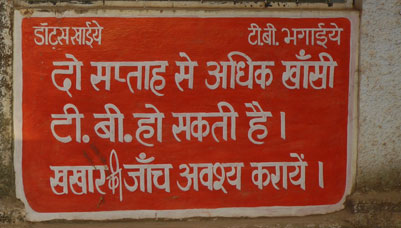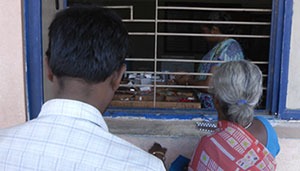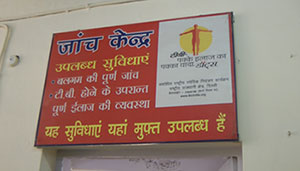Why an episode on TB? Because it can soon turn into a national disaster if we do not act now.

India is the TB capital of the world. Every year, a staggering 18 lakh people contract the disease, of which 8 lakh are infectious and about 3.7 lakh people die annually. It is a shame that this disease has not been fought on a war footing (Watch: All about TB). Previously known as a poor man's disease, TB affects all classes of society today with its deadlier form-multidrug-resistant TB (MDR TB). This bacteria has become resistant to the first line drugs-especially Rifampicin and Isoniazid-which can otherwise cure the disease in six months.
MDR TB is a monster; it takes more than two years to cure, its costs are prohibitive-from three lakhs to twenty lakhs-and the side effects are such that many patients prefer death to treatment. Apart from MDR TB, two more dangerous variants, the extremely drug-resistant (XDR) and totally drug-resistant (TDR) TB are making treatment next to impossible. Doctors, nurses and ward boys are most vulnerable to the disease as the pathetic living and working conditions makes them prime targets for the bacilli (Watch: Occupational hazard)

Dr Shekhar Khandare's sister, 24-year-old Dr Samidha Khandare contracted MDR TB while working at Sion Hospital, Mumbai. All the efforts of the doctors at Sion Hospital and Hinduja Hospital in the city could not save her life. Dr Zarir Udwadia, one of the foremost TB experts in the country, does not mince words as he explains how the country is sitting on a time bomb of drug-resistant TB. Prathamesh Balgi, who had drug-resistant TB, explains graphically the kind and number of surgeries he had to undergo, and injections and drugs he had to consume in order to survive. (Watch: When TB turns deadly)
The major problem is that one drug-resistant patient can pass on drug-resistant TB to ten other people around him or her. Dr Sheilja Singh talks of how a liftman with TDR TB continued working till he died of the disease. One can imagine the number of people he had infected with TDR TB. Dr Lalit Kumar Anande, Chief Medical Officer at Asia's biggest TB hospital, the Group of TB Hospitals in Sewri, Mumbai, explains how he has seen the TB bacilli mutate which each passing mutation becoming deadlier than the previous one. The scourge of TB continues unabated despite India having one of the largest free TB programme in the world-the Revised National TB Control Programme (RNTCP). While the RNTCP has been useful in curing lakhs of TB cases per year, there are serious lacuna in the programme. It is not patient-centric, has serious problems in its drugs supply chain, and follows the alternate day therapy regime even when a daily regimen is preferred worldwide. This lacuna in the RNTCP has given rise to the possibility that the programme itself may have paved way for the bacilli to become drug resistant. (Watch: What's going wrong). Dr Shaffi, who has been a WHO consultant with the RNTCP in Bihar, strongly feels so. (Watch: DOTS X-rayed).

But the war against TB cannot be restricted to just medical treatment. At heart, TB is a social disease, attacking especially those who are malnourished, underweight, whose body immune system is weak and who live and work in crowded and unhygienic conditions. Certain communities like weavers are especially prone to the illness. (Watch: Sickness looms). As Dr Anurag Bhargava forcefully argues, the war against TB must also be a war against hunger and malnutrition. A balanced and healthy diet is the best drug against TB. In the U.S., providing nutritious food was part of their DOTS programme. (Watch: The magical vaccine)
There are also some stories that give us hope that winning in the fight against TB is possible. Deepti Chavan, a survivor of MDR TB, who had to undergo two painful operations that nearly took her to the jaws of death, is today an inspiration for all those suffering from this scourge. (Watch: Survivor and Fighter). In India, organizations like Operation ASHA have been successful in motivating and training Directly Observed Treatment, Short-course (DOTS) workers and moreover, they are successfully using software that monitors whether the patient has taken his or her medication daily.Some DOTS workers in the country are so passionate and committed to their patients, that they go the extra mile to ensure that their patients are cured. (Watch: Heroic foot soldiers). As a society and community, we should always appreciate and honour their work so that they feel motivated.(Watch: Beyond call of duty)